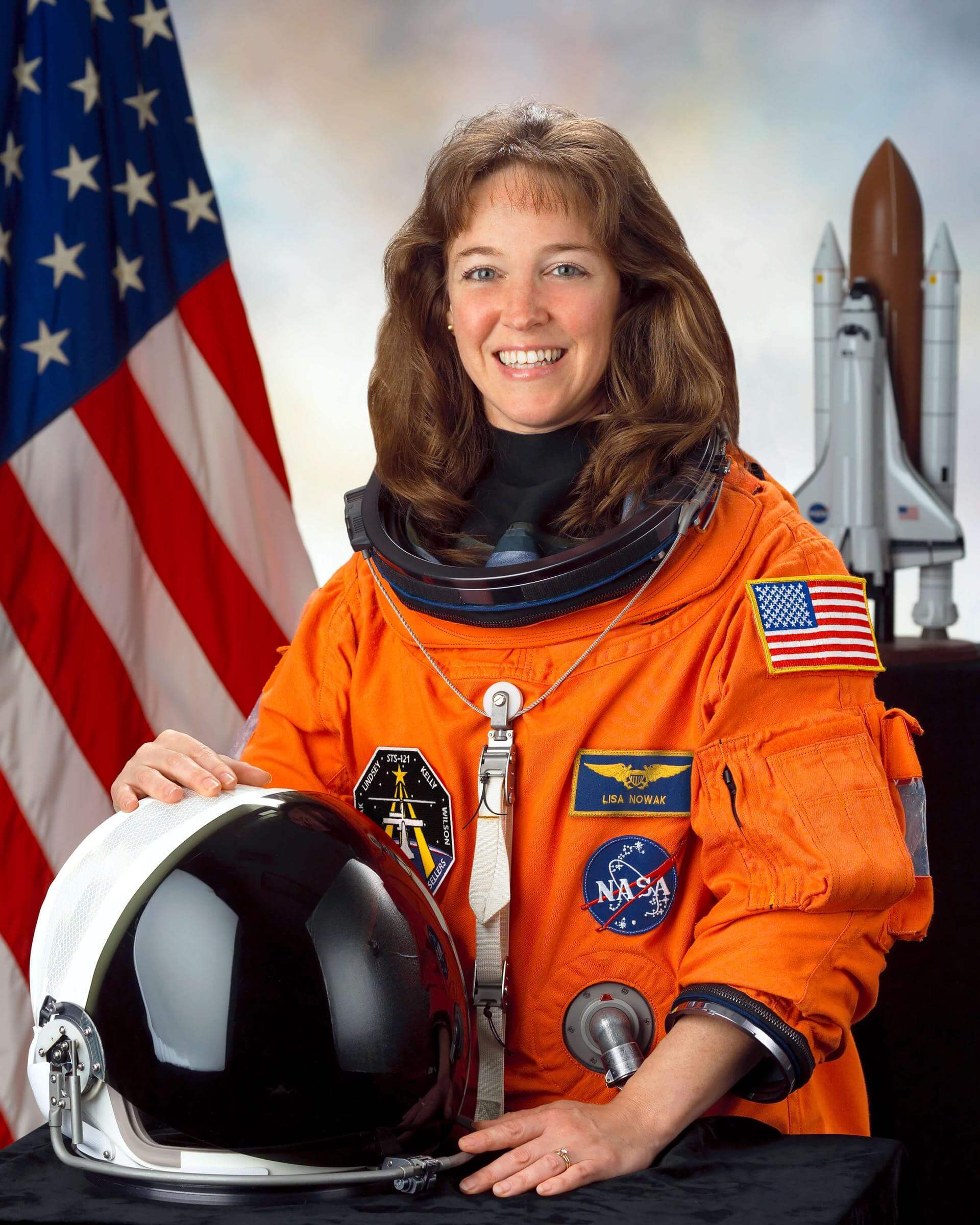Lisa Nowak
American - (NASA)
Dismissed
Date of Birth: May 10, 1963
Age: 62
Lisa Marie Nowak is an American former naval flight officer and NASA astronaut. Born in Washington, D.C., she was selected by NASA in 1996 and qualified as a mission specialist in robotics. Nowak flew aboard Space Shuttle Discovery during the STS-121 mission in July 2006, where she was responsible for operating the robotic arms of the shuttle and the International Space Station. On February 5, 2007, she was arrested in Orlando, Florida, and subsequently charged with the attempted kidnapping of U.S. Air Force Captain Colleen Shipman, who was romantically involved with astronaut William Oefelein. Nowak was released on bail, and initially pleaded not guilty to the charges, which included attempted kidnapping, burglary with assault, and battery. Her assignment to the space agency as an astronaut was terminated by NASA effective March 8, 2007. On November 10, 2009, Nowak agreed to a plea deal with prosecutors and pleaded guilty to charges of felony burglary of a car and misdemeanor battery. Nowak remained a Navy captain until August 2010, when a naval board of inquiry, composed of three admirals, voted unanimously to reduce Nowak in rank to commander and to discharge her from the Navy under other than honorable conditions.
Space Shuttle Discovery / OV-103 | STS-121
National Aeronautics and Space Administration | United States of AmericaKennedy Space Center, FL, USA
July 4, 2006, 6:37 p.m.
Status: Success
Mission:
STS-121 was a 2006 NASA Space Shuttle mission to the International Space Station (ISS) flown by Space Shuttle Discovery. The main purposes of the mission were to test new safety and repair techniques introduced following the Columbia disaster of February 2003 as well as to deliver supplies, equipment and European Space Agency (ESA) astronaut Thomas Reiter from Germany to the ISS.
Low Earth OrbitThe National Aeronautics and Space Administration is an independent agency of the executive branch of the United States federal government responsible for the civilian space program, as well as aeronautics and aerospace research. NASA have many launch facilities but most are inactive. The most commonly used pad will be LC-39B at Kennedy Space Center in Florida.
Long March 12
Unknown Payload
Commercial LC-2 - Wenchang Space Launch Site, People's Republic of ChinaDetails TBD.
Falcon 9
Starlink Group 6-90
Space Launch Complex 40 - Cape Canaveral SFS, FL, USAA batch of 29 satellites for the Starlink mega-constellation - SpaceX's project for space-based Internet communication system.
Falcon 9
Starlink Group 15-11
Space Launch Complex 4E - Vandenberg SFB, CA, USAA batch of 27 satellites for the Starlink mega-constellation - SpaceX's project for space-based Internet communication system.
Kinetica 1
9 satellites
Launch Area 130 - Jiuquan Satellite Launch Center, People's Republic of ChinaShare ride of 9 satellites to sun-synchronous orbit: * Satellite 813 (United Arab Emirates) * Jilin-1 Gaofen 07B-01/07C-01/07D-01 * Dongpo-15 …
Falcon 9
NROL-77
Space Launch Complex 40 - Cape Canaveral SFS, FL, USAClassified payload for the US National Reconnaissance Office.



